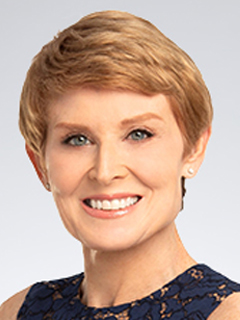Winter storms chill consumers
The super core (inflation measure) is still running one percent above the pace in 2019.

February 28, 2025
Personal disposable incomes rose 0.6% in January after adjusting for inflation, buoyed by a bump in Social Security payments and a surge in dividend income. The aging of the baby boom into retirement is supporting the jump in Social Security outlays.
Wealth effects helped to buoy spending in 2024; the top 10% of income earners accounted for nearly half of all consumer spending according to work done by Moody’s. Wages and salaries rose only 0.1% after adjusting for inflation, the same as December.
Those gains were not matched by consumer spending, which plummeted 0.5% after adjusting for inflation. That is the sharpest drop in three years but comes on the heels of an 0.6% jump in December, which was revised up. Consumers bought ahead of tariffs and an end of tax credits for electric vehicles (EV). EV sales reached the highest on record in December.
The weakness in spending was less reflective of a consumer pullback than unusually bad winter weather. It was the coldest January since 1988 as two bad storms blanketed the South. That kept consumers out of stores and off dealer lots.
Goods spending dropped 1.7% after adjusting for inflation, the largest decline since July 2021. That marked the Delta wave of COVID and coincided with vehicle shortages. Spending on services cooled overall but edged up a tick in January from December.
The savings rate jumped to 4.5% in January, the highest pace since June 2024. That will show up as a bit of a tailwind for spending in February. Vehicle sales are expected to pick up as consumers returned to dealer lots to buy ahead of tariffs.
Inflation cools, but the battle to tame it persists
The personal consumption expenditures (PCE) index rose 0.3% in January, the same as December. The year-on-year measure cooled to a 2.5% pace in January from a 2.6% pace in December. That was partly due to the unexpected pickup in the PCE index one year ago; it makes for easier year-on-year comparisons. That is closer to the Federal Reserve’s 2% target but not close enough for it to declare victory in the battle against inflation.
The core PCE, which strips out the volatile food and energy components of the index, rose 0.3% in January, the same as December. That translated to a 2.6% increase from a year ago, which was better than the 2.9% pace in December. Again, an acceleration in core inflation a year ago accounted for much of that improvement.
Momentum in the core PCE was less encouraging. The three-and six-month moving averages came in at 2.4% and 2.6%, respectively, slightly higher than December.
The super core services PCE, which strips out shelter costs and has proven the stickiest, was more encouraging. It rose only 0.2% in January after rising 0.3% in December. That translates to a 3.1% increase from a year ago, nearly a one-half percent cooler than the fourth quarter of 2024. That is the weakest pace in almost four years.
The momentum measures of the super core came in mixed. The three-month moving average fell to 3.1% from 3.7%. However, the six-month moving average equaled the December level at 3.3%. The super core is still running one percent above the pace in 2019.
More worrisome is the outlook for inflation, given new tariffs and the rapid deterioration in consumer attitude surveys in February. The results reveal a toxic mix of inflation fears and concerns about job security. We don’t tend to see the two moving in tandem but new tariffs have been levied at an alarming pace; some have already taken effect.
Another swath of tariffs is expected to go into effect on March 12 although Customs and Border Protection are finding it tough implementing changes as fast as the administration is making them. The list of items that the new tariffs cover spans everything from semiconductors to the kitchen sink – stainless steel sinks.
The Fed needs to be confident that inflation will continue to cool and stay low to cut interest rates again.

Diane Swonk
KPMG Chief Economist
Bottom Line:
Consumers held back as unusually bad winter storms hit the South hard in January. We could see some rebound in February, but consumer moods are deteriorating rapidly. Inflation cooled but we are still running well above the Fed’s target of 2%, which has pushed it to the sidelines.
The Fed needs to be confident that inflation will continue to cool and stay low to cut interest rates again. Tariffs and the threat of retaliation by some of our closest trading partners make that less likely, even as the overall economy slows. We do not expect any rate cuts by the Fed in 2025.
Explore more

Consumers spent with abandon at year-end
Consumers continued to tap the savings and wealth amassed during the last couple of years.

KPMG Economics
A source for unbiased economic intelligence to help improve strategic decision-making.

Breaking up is hard to do: Tariffs & trade wars
The outlook for economic growth is cooling.
Subscribe to insights from KPMG Economics
KPMG Economics distributes a wide selection of insight and analysis to help businesses make informed decisions.
Meet our team
